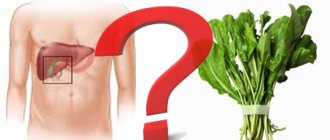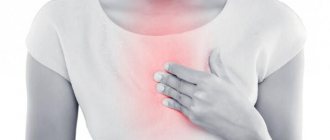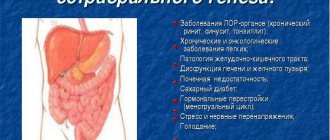Not every person understands what a change in the color of stool to light can mean if the stool becomes discolored. Considering that stool can be light-colored for both physiological and pathological reasons, it should be concluded that without determining the cause of the appearance of light-colored stool, it is impossible to select an effective treatment for the problem.
The article describes in detail how to recognize the disease, how to understand why the stool has become very light. The most common reasons that an adult has light-colored stools are liver diseases or liver dysfunction due to certain reasons, both physiological and pathological. If the color of the stool has changed to very light, light yellow, gray, or if the stool has become very light in color, it is necessary to monitor the results of bowel movements for several days. If the color of the poop has not changed, or if the stool remains discolored or gray, then it is recommended that you seek help from a doctor. Because changes in the color of stool, if they are not caused by food, are often the first symptoms of the onset of diseases of the gastrointestinal tract or other diseases that affect the functioning of the intestines, liver, gall bladder and other gastrointestinal organs.
Light-colored stool in adults: normal or pathological? How to recognize?
In most cases, lightening of stool occurs due to liver disease. Therefore, if you find stool of an unusual color, you should not delay a visit to the doctor, because only timely detection of the problem can guarantee a successful cure. In a healthy person, excrement always takes on a brown tint. That is, normally, stool should be brown or light brown in color. This is due to the fact that in the process of life, hemoglobin from red blood cells is broken down into bilirubin and hemosiderin. The first component is transferred to the liver, where it is converted and becomes part of bile, which plays an important role in the digestion of food. In the duodenum, part of the bile is processed, and the second half is excreted from the body along with feces. It is its presence that gives stool its characteristic brown color. But bile deficiency is the main factor in the appearance of discolored stool.
If you experience lightening of your stool from time to time, this does not indicate the presence of pathology. However, consultation with a specialist will not be superfluous - perhaps light, light gray or almost white feces are one of the first signs of a developing disease, which is much easier to stop at the very beginning. Diet is also of great importance in shaping the color of stool, so if you notice light-colored stool, do not rush to panic - first, analyze what you ate the day before bowel movement and try to avoid these foods for a while. It is likely that within a couple of days the color of the stool will return to normal.
What does red-tinged stool mean?
The appearance of red-brown feces is an alarming sign and, as a rule, indicates the presence of pathologies in the body. However, it is still worth first finding out why the feces acquired such a shade. In this case, you also need to take into account the foods that were eaten the day before. For example, foods such as beets, tomatoes, and some fruit juices can turn stool red. Foods containing dyes and eaten in large quantities can also have an effect. Often, a child’s stool has a red tint after eating vegetables, since the intestines are just adapting to digest them.
If there was nothing like this in your diet, you should think about the presence of diseases in the intestines. As a rule, inclusions of blood in the stool indicate hemorrhoids, anal fissure or bleeding in the rectum.
Many patients wonder why poop is brown, and are very surprised if it suddenly changes color. In general, the color of the stool primarily depends on the secretion of bile, so special attention should be paid to this factor. Why the poop is brown, but at the same time too light or dark - this is already a matter of changes in the body. It is important to understand here that the color of stool does not simply change, and if there are other symptoms that cause concern, you should consult a specialist and undergo a full examination, which will help determine the cause and prescribe treatment.
Normal stool color ranges from light brown to dark brown. Sometimes the stool may be a strange color - yellow or black. In most cases, this depends on some changes in the diet. But few people expect to see white stool. Not often, but it does happen, and the cause of white stool can be an indicator of very serious health problems.
What diseases can occur if the stool (poop) is lighter in color?
You should immediately understand that there are physiological reasons for light-colored stool and pathological reasons for light-colored stool in an adult. If we talk about pathological conditions, one of the symptoms of which is lightening of excrement, the most common among them are:
1 Hepatitis can make poop gray, very light gray, or almost white. What is hepatitis and why does it change the color of human stool? Hepatitis is an inflammation of the liver due to the penetration of infectious pathogens, autoimmune diseases, alcoholism, and drug addiction into the body. The clinical manifestations of this disease are as follows: lack of appetite, nausea, yellowness of the skin and mucous membranes, joint pain, deterioration in general health, etc.
2 Cholecystitis and light yellow stool, sometimes almost gray in color, are common symptoms of this disease, in addition to pain in the right side of the abdomen or discomfort in this area. What is cholecystitis and why is it dangerous? Cholecystitis (acute or chronic) is an inflammation of the walls of the gallbladder, which usually develops as a result of blockage of the cystic duct by stones or tumor-like neoplasms. In the acute stage, cholecystitis is characterized by sudden severe pain in the right hypochondrium, a feeling of bitterness in the mouth, bloating, stool instability, fever, skin rashes and general weakness.
3 Pancreatitis can change the color, consistency and smell of human stool. What is pancreatitis and why does it change a person's bowel movements? Pancreatitis (acute or chronic) is a malfunction of the pancreas, in which its enzymes are activated directly in the organ itself, digesting its own tissues. In most cases, the appearance of acute pancreatitis is associated with alcohol abuse or gallstone disease. Pancreatitis is characterized by pain in the right or left hypochondrium, light-colored stool with particles of undigested food and a very unpleasant odor, belching, flatulence, surges in blood pressure and sudden weight loss.
4 Crohn's disease can change the color and consistency of stool. With such a serious illness, severe diarrhea and frequent diarrhea are very often observed. Crohn's disease is a chronic inflammatory lesion of all layers of the intestinal wall. Symptoms and signs of Crohn's disease depend on where the source of inflammation is localized, and may include the following signs: general malaise, fever, nausea, pain and cramping in the abdomen and anus, diarrhea with light stool mixed with blood.
5 Malignant neoplasms in the gastrointestinal tract. In most cases, oncology in the first stages is completely asymptomatic, but as the tumor grows, the patient may have complaints of nausea, vomiting, abdominal pain, lack of appetite and sudden weight loss, discoloration of stool.
Often, a change in the color of stool is observed while taking various medications. This phenomenon can be provoked by:
1 broad-spectrum antibacterial drugs;
2 medications aimed at combating gout;
3 medications that have an anti-inflammatory effect.
If you associate stool lightening with taking pharmaceutical medications, you should notify your doctor, who will decide on the advisability of such treatment. We also recommend that you pay attention to your diet, since, according to some scientists, consuming large amounts of too-fat dairy products, such as homemade sour cream or cream, can also contribute to the lightening of stool.
Associated symptoms
Without a diagnostic examination, it is impossible to say unambiguously what light-colored stool means in an adult patient and what factors provoke its appearance.
When pathological processes occur in the digestive tract, in addition to light-colored stool, the symptoms are as follows:
- nausea, urge to vomit;
- alternating appearance of diarrhea and diarrhea;
- liquid consistency of feces;
- dehydration of the body;
- excessive formation of intestinal gases;
- sour taste in the mouth;
- belching;
- bad feeling;
- fever accompanied by chills;
- lack of appetite;
- pain in the abdominal area.
If you have the above symptoms, you should not hesitate to see a doctor, since there is a high probability of developing serious pathologies.
Stool color – light brown, white, pale yellow, beige
Based on the color of the stool, a competent specialist can assume the presence of a particular disease, for example:
1 light brown stool per adult. What does light brown stool mean, what does light brown stool color lighten? Such feces are a frequent companion for vegetarians and people who prefer plant-based foods. This phenomenon is considered quite harmless and does not require any treatment. Another reason for the appearance of light brown stools is the accelerated evacuation of feces. In this case, it is recommended to review the diet with the addition of protein products and switch to eating 5-6 times a day in small portions;
2 almost white feces in an adult. Many people, if they discover that white or almost white feces have appeared, are immediately scared. And often they are right, because... White stools, most often, do not mean anything good. If a person has had white poop for more than 20 days, it is recommended to consult a specialist. Symptoms such as bright white or light gray poop are most often encountered by people with pancreatic disorders, malignant neoplasms in the digestive tract, or patients with diabetes. At the same time, you should not panic if white feces are a one-time phenomenon; only regular bowel movements with too light-colored feces can signal a serious problem;
3 pale yellow stool, what could such poop mean? This is normal when consuming large amounts of dairy products, in other cases it may indicate problems with the gallbladder, pancreas or liver;
4 beige stool, frequent beige stools. Regular, light-colored stools may indicate a deficiency of bilirubin. This problem most often arises against the background of liver pathologies or narrowing of the bile ducts, so it is best to entrust the diagnosis and treatment of this pathology to a professional.
5 it should be noted that if white, light yellow, beige or light brown feces, almost completely discolored stool color appears for the first time, then it is recommended to observe the color of the stool for several days. Because if the discolored feces were only 1 day or 1 time, 1 day, then such symptoms cannot be considered signs of pathology.
Treatment methods
Lightening of stool cannot be ignored. After completing the diagnosis, the doctor will individually develop a treatment regimen:
- If the disorder is caused by impaired absorption, then nutritional adjustments and vitamin complexes are prescribed.
- If the excrement turns white due to stones or neoplasms, the doctor will prescribe surgery. Modern medicine uses endoscopic methods to remove stones, which make it possible to get rid of pathology using ultrasound.
- Anti-inflammatory and antiviral medications are prescribed to treat hepatitis.
- Light-colored bowel movements caused by pathologies in the pancreas require complex drug treatment, including antibiotics, antispasmodics and analgesics, anti-inflammatory drugs and vitamins.
Smecta will help cleanse the body of toxins, prevent infection from entering the digestive system, and restore the intestinal mucosa.
Traditional medicine methods
It is possible to recover from diseases that cause lightening of feces not only with the help of drug therapy. To solve the problem, folk recipes are also used to help eliminate the cause that caused this condition:
- Infusion of oat grains. Wash and dry the sprouted grains. Afterwards, grind the raw materials into powder, which is diluted in cold water. The resulting mixture must be boiled for 3 minutes, and then left to infuse for half an hour. Take the medicine in small sips throughout the day.
- Decoction of corn silk. This remedy will help cure hepatitis. To prepare, pour 200 ml of boiling water into 1 tbsp. a spoonful of stigmas. Leave to infuse for 20 minutes. Drink instead of tea all day.
- To cure light-colored stools caused by stones in the gall bladder, use black rare juice. The latter is drunk 100 ml every day on an empty stomach. Duration of treatment is 3-6 weeks.
A change in the color of stool very often indicates the development of dangerous pathologies. Therefore, an important point is to find out the reasons for the lightening of stool. Timely treatment will reduce the risk of complications.
Discoloration of stool in an adult occurs as a result of metabolic disorders in the body. This may be due to the specifics of nutrition, or it may be a sign of diseases of the liver, pancreas, gastrointestinal tract, etc. Based on the presence of white feces, accompanying symptoms and test results, the doctor can make a timely diagnosis and prescribe appropriate treatment.
Change in stool color after drinking alcohol
Many people notice that the morning after drinking alcohol their urine darkens and their stool becomes lighter, but not everyone understands what this may be connected with. Alcohol abuse often leads to lightening of stool, and this is quite simple to explain. The fact is that alcoholic drinks provoke increased load on the liver, which is forced to filter everything that enters the body. If alcohol is flavored with a large amount of fatty foods, then the liver may simply not be able to cope with such a burden, as a result of which a person may experience not only lightening of the stool, but also diarrhea.
One of the main functions of the liver is detoxification - neutralization of various toxins and bacteria. That is why alcohol abuse leads to the gradual death of cells in this organ. In order for the liver to work properly, it needs to be given some time, but if this condition is constantly ignored, then soon a person may face serious problems, for example, hepatitis. The development of this formidable disease can be suspected by the following symptoms: lightening of stool, pain in the right hypochondrium, yellowing of the skin and mucous membranes, nausea, weakness and apathy.
Dark urine and light feces, what does this mean?
Light-colored stool combined with dark urine is not always one of the unpleasant symptoms. If you notice that your morning urine has a very rich color, then do not rush to panic, this is normal, since the absence of urination for several hours provokes an increased concentration of coloring pigment. Normally, strong darkening of urine also occurs when the body is dehydrated due to physical exertion, accompanied by increased sweating. Another reason for the discharge of dark urine and light-colored feces is the use of certain medications, for example, complex vitamins, chemotherapy drugs, metronidazole and others.
In some cases, the combination of such symptoms is due to an increase in bile levels or a disturbance in the process of hemolysis. Sometimes discoloration of stool occurs when an organic compound such as phenol or its derivative, creole, enters the body. Darkening of urine can also be caused by an increased concentration of bilirubin in a person’s blood. At the same time, the accumulation of bile pigment also occurs in the subcutaneous tissues, mucous membranes and even the eye sclera, which invariably affects the appearance of the patient.
Chronic cholecystitis and cholelithiasis
It usually occurs after the formation of sediment or stones in the gall bladder. In some cases, the disease can be triggered by an abnormal physiological shape of the organ - if there are bends on it, then cholecystitis is regarded as a normal condition. To avoid pain and problems with digestion, you need to take a course of choleretic drugs from time to time.
“Urossan” has proven itself to be excellent in this situation - it has a mild choleretic effect, and the hepatoprotective effect supports the functioning of the body. Already in the second week of taking the capsules, the color of the stool will normalize and the patient will feel more alert and efficient.
Causes of unpleasant smell of feces, why poop stinks strongly
Lightening of the stool in combination with a pungent putrid odor most often indicates a disruption in the functioning of the gastrointestinal tract. A dangerous sign in this case is diarrhea, which indicates slow breakdown and absorption of fats. There are few reasons for this phenomenon, but they are all quite dangerous, ranging from cholelithiasis to malignant tumors.
In some cases, light-colored stools with an unpleasant odor indicate the development of chronic pancreatitis. Be that as it may, the appearance of such a clinical picture should be a reason to immediately contact a medical institution and begin a course of treatment. It should also be noted that if the feces stink strongly, then this is not the norm. The smell of stool should not differ from the usual one. If your poop has a strong and unpleasant odor for several days, this may be due to the consumption of certain foods. If after 3 or 4 days the smell of stool has not returned to normal, it is recommended to undergo examination by a doctor. A sharp and unpleasant smell of stool from stool is one of the symptoms of the development of pathology, along with a change in the color of stool and its consistency.
Possible diseases
The reasons for light-colored stool can be life-threatening. Pancreatitis, diabetes, hepatitis, cholecystitis, and oncological processes lead to the development of this symptom. In addition, clarification of excrement occurs during fermentative dyspepsia, dysbacteriosis, and intestinal infections.
Depigmentation sometimes occurs in pregnant women. The reason for this is mechanical compression of the abdominal organs by the enlarged uterus.
Pancreatitis
The pancreas is one of the structures responsible for the production of digestive enzymes. Its inflammation leads to a decrease in the secretion of pancreatic juice and incomplete breakdown of food entering the duodenum. In addition, swelling and compression of the efferent ducts are the cause of impaired exit of bile from the bladder. In this case, the feces become light or colorless. The shade depends on the level of blockage of the excretory ducts.
The color of stool itself is not a diagnostic sign. With pancreatitis, the stool is loose and unformed. There is a large amount of fat (steatorrhea), fiber, and undigested food particles. Foaming of excrement may occur. The masses are poorly washed off with water and smell unpleasant.
In addition to assessing the characteristics of the stool, the overall clinical picture is also important. The patient complains of acute, stabbing pain behind the sternum or in the upper abdomen, vomiting, nausea, and dyspeptic symptoms. On ultrasound, the gland is swollen and enlarged. Foci of necrosis may be detected.
Therapy for such conditions is carried out in a hospital setting. The patient is prescribed analgesics, antispasmodics, enzymes, and a therapeutic diet. A person notices the return of the properties of feces to normal after the clinical manifestations of the disease subside.
Various impurities in light feces and their causes
In some cases, a person may notice mucus in the stool, what to do in this case? The appearance of uncharacteristic impurities against the background of stool lightening may indirectly indicate the cause of this phenomenon. Thus, an abundant amount of mucus signals the disease with proctitis or the formation of internal fistulas.
What could happen if the stool contains particles of undigested food, what could this indicate? In some cases, people notice that when walking long distances, parts of food pieces are present in the excreted stool. If such symptoms appear only once or several times, then there is no need to worry. Because in this case, particles of undigested food in small quantities are not a sign of pathology, but may indicate an acceleration of the process of food digestion. If such symptoms appear frequently, this may already indicate the development of various types of pathology. The presence of parasites in feces should be a reason to contact an infectious disease specialist and immediately begin medical therapy, since any helminthic infestations can negatively affect the functioning of the immune, nervous and digestive systems.
Foamy stool, symptoms and signs of what problem
Foamy stool of an unnaturally light color may indicate the development of fermentative dyspepsia - a disorder of digestive processes associated with insufficient digestion of carbohydrates. In addition to the characteristic diarrhea, the following signs indicate the development of the disease: bloating, belching, flatulence, dull pain in the abdomen and dizziness. The process of defecation becomes more frequent, but after it the person experiences noticeable relief. Feces may contain particles of undigested food and other inclusions. This condition does not pose a threat to the life and health of the patient, but causes severe discomfort, so it is recommended to begin treatment as quickly as possible.
Another reason for light, foamy stool is a deficiency of enzymes necessary for digestion. Most often, a similar phenomenon is observed in cases of eating disorders and in those who abuse sweets, kvass, sauerkraut and other products that cause fermentation in the intestines. In some cases, a similar clinical picture, when parts of the stool foam, appears as a result of the penetration of bacterial pathogens into the body, which lead not only to lightening of the stool, but also to other unpleasant symptoms. The danger of this condition is rapid dehydration of the body, so rehydration therapy should be the basis of treatment.
Chronic pancreatitis, its manifestations and directions in therapy
Pancreatitis is inflammation of the pancreas tissue. Rarely does anyone think about the health of this organ. Meanwhile, it is he who produces the enzymes necessary for the digestion process. It synthesizes the most important hormone in the human body - insulin. The pancreas determines how well the food will be digested, because if not enough enzymes are released, pieces of undigested food may remain in the stool and it will be light in color.
In order to diagnose pancreatitis, it is necessary to undergo an ultrasound. The organ will be enlarged, or the doctor will notice areas of inflammation in the tissues. Treatment methods involve taking enzymes from outside in order to neutralize their production by the gland. Reviews about this treatment are positive. It is especially effective if you adhere to a therapeutic diet: exclude fatty foods, heavy meat, fast food and alcoholic drinks. You should follow the drinking regime and drink as much clean liquid as possible.
Light-colored stool during pregnancy, reasons
A change in the color of stool during pregnancy is not normal and may indicate the development of pathological processes in the digestive tract. In most cases, the cause of this phenomenon is a violation of the intestinal microflora associated with poor nutrition, stress, taking medications, intestinal infections and long-term hormonal therapy. Self-medication is unacceptable, since through inept actions a woman can harm not only herself, but also the health of her unborn child.
Reasons for lightening stool
Normally, 70% of adult feces consists of water, the remaining 30% comes from processed food consumed over the last 2-3 days, dead bacteria and desquamated intestinal epithelial cells. In a healthy adult, the color of stool ranges from light brown to dark. There should be no specific odor or foreign impurities. It is necessary that the stool has a dense consistency.
The occurrence of atypical light-colored stools is not a reason to panic, since there are many factors that provoke such changes.
There are several reasons for lightening stool:
- physiological processes;
- long-term use of certain medications;
- pathological problems.
Often the coloring of stool in lighter shades in adults is associated with the consumption of foods high in fat. But changing the color of feces does not cause inconvenience to an adult. And after reviewing the diet, the shade returns to normal. If the diet is unsuccessful, other possible causes of changes should be considered.










